One of the first things new sports bettors should do after downloading their first betting app is download their second betting app.
Price comparison, otherwise known as line shopping, is a critical component of reducing the house edge and every serious bettor uses it to get the most for their money.
In this guide, BettingUSA explains why line shopping is so important, how much money it saves, and how bettors can wield this powerful weapon.
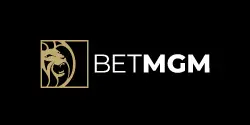 $1500 Second Chance BetBetMGM Bonus Code: BUSABONUS
Gambling problem? Call 1-800-GAMBLER (available in the US). Call 877-8-HOPENY or text HOPENY (467369) (NY). Call 1-800-327-5050 (MA). 21+ only. Please gamble responsibly. Call 1-800-NEXT-STEP (AZ), 1-800-BETS-OFF (IA), 1-800- 981-0023 (PR). First bet offer for new customers only. Subject to eligibility requirements. Bonus bets are non-withdrawable. In partnership with Kansas Crossing Casino and Hotel. See BetMGM.com for terms. US $1500 promotional offer not available in New York, Nevada, North Carolina, Ontario, or Puerto Rico.
$1500 Second Chance BetBetMGM Bonus Code: BUSABONUS
Gambling problem? Call 1-800-GAMBLER (available in the US). Call 877-8-HOPENY or text HOPENY (467369) (NY). Call 1-800-327-5050 (MA). 21+ only. Please gamble responsibly. Call 1-800-NEXT-STEP (AZ), 1-800-BETS-OFF (IA), 1-800- 981-0023 (PR). First bet offer for new customers only. Subject to eligibility requirements. Bonus bets are non-withdrawable. In partnership with Kansas Crossing Casino and Hotel. See BetMGM.com for terms. US $1500 promotional offer not available in New York, Nevada, North Carolina, Ontario, or Puerto Rico.
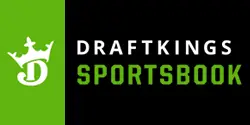 No Sweat Bet up to $1,000DraftKings Promo Code: Not Needed
Gambling problem? Call 1-800-GAMBLER. Call (800) 327-5050 or visit gamblinghelplinema.org (MA). Call 877-8-HOPENY/text HOPENY (467369)(NY). Call 1-800-522-4700 (NH), 888-789-7777/visit ccpg.org (CT), or visit www.1800gambler.net (WV). Offer for new customers 21+ (18+ KY/NH/WY), present in AZ, CO, CT, IL, IN, IA, KS, KY, LA (select parishes), MA, MD, ME, MI, NJ, NJ, NY, OH, PA, TN, VA, VT, WV, WY only. Void in ONT/OR/NH. Eligibility restrictions apply. See terms at sportsbook.draftkings.com/promos.
No Sweat Bet up to $1,000DraftKings Promo Code: Not Needed
Gambling problem? Call 1-800-GAMBLER. Call (800) 327-5050 or visit gamblinghelplinema.org (MA). Call 877-8-HOPENY/text HOPENY (467369)(NY). Call 1-800-522-4700 (NH), 888-789-7777/visit ccpg.org (CT), or visit www.1800gambler.net (WV). Offer for new customers 21+ (18+ KY/NH/WY), present in AZ, CO, CT, IL, IN, IA, KS, KY, LA (select parishes), MA, MD, ME, MI, NJ, NJ, NY, OH, PA, TN, VA, VT, WV, WY only. Void in ONT/OR/NH. Eligibility restrictions apply. See terms at sportsbook.draftkings.com/promos.
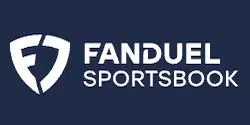 Bet $5 Get $150FanDuel Promo Code: Not Needed
Gambling Problem? Call 1-800-GAMBLER. Hope is here. Gamblinghelplinema.org or call (800)-327-5050 for 24/7 support (MA). Call 1-877-8HOPE-NY or Text HOPENY (467369) (NY). 21+ and present in AZ, CO, CT, DC, IA, IL, IN, KS, KY, LA (permitted parishes only), MA, MD, MI, NC, NJ, NY, OH, PA, TN, VA, VT, WV, or WY.
Bet $5 Get $150FanDuel Promo Code: Not Needed
Gambling Problem? Call 1-800-GAMBLER. Hope is here. Gamblinghelplinema.org or call (800)-327-5050 for 24/7 support (MA). Call 1-877-8HOPE-NY or Text HOPENY (467369) (NY). 21+ and present in AZ, CO, CT, DC, IA, IL, IN, KS, KY, LA (permitted parishes only), MA, MD, MI, NC, NJ, NY, OH, PA, TN, VA, VT, WV, or WY.
 Second Chance Bet Up To $500BetRivers Bonus Code: BUSA
Gambling problem? Call or TEXT 1-800-GAMBLER. 21+ and present in AZ, CO, DE, IL, IN, IA, LA, MD, MI, NJ, NY, OH, PA, VA, or WV. Welcome bonus for new customers only. Bonus issued as non-withdrawable bonus bets. Min. odds and other restrictions apply. Visit BetRivers for full T&Cs.
Second Chance Bet Up To $500BetRivers Bonus Code: BUSA
Gambling problem? Call or TEXT 1-800-GAMBLER. 21+ and present in AZ, CO, DE, IL, IN, IA, LA, MD, MI, NJ, NY, OH, PA, VA, or WV. Welcome bonus for new customers only. Bonus issued as non-withdrawable bonus bets. Min. odds and other restrictions apply. Visit BetRivers for full T&Cs.
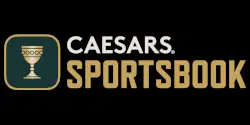 $1000 Bonus BetCaesars Sportsbook Promo Code: BUSA1000
21+. New users only. Offer valid and must be physically present in AZ, CO, IA, IL, IN, KS, KY, LA, MA, MD, ME, MI, NC, NJ, NY, OH, PA, TN, VA, WV, IL, MD, NJ, OH, PA, TN, VA, WV, WY. 1-877-8-HOPENY (467369) or Text HOPENY (467369). Call 1-800-GAMBLER.
$1000 Bonus BetCaesars Sportsbook Promo Code: BUSA1000
21+. New users only. Offer valid and must be physically present in AZ, CO, IA, IL, IN, KS, KY, LA, MA, MD, ME, MI, NC, NJ, NY, OH, PA, TN, VA, WV, IL, MD, NJ, OH, PA, TN, VA, WV, WY. 1-877-8-HOPENY (467369) or Text HOPENY (467369). Call 1-800-GAMBLER.
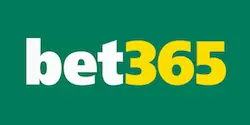 Bet $5 Get $150Bet365 Bonus Code: Not RequiredGambling problem? Call 1-800-BETS-OFF (IA), 1-800-GAMBLER (AZ/CO/IN/LA/NC/NJ/OH/VA) 21), (KY) 18+. New Customer Offer Bet $5 and Get $150 in Bonus Bets at bet365. Deposit required. Bonus Bets winnings are added to Bonus Bets balance. Bonus Bet wager excluded from returns. T&Cs, time limits and exclusions apply.
Bet $5 Get $150Bet365 Bonus Code: Not RequiredGambling problem? Call 1-800-BETS-OFF (IA), 1-800-GAMBLER (AZ/CO/IN/LA/NC/NJ/OH/VA) 21), (KY) 18+. New Customer Offer Bet $5 and Get $150 in Bonus Bets at bet365. Deposit required. Bonus Bets winnings are added to Bonus Bets balance. Bonus Bet wager excluded from returns. T&Cs, time limits and exclusions apply.21+ to Play, T&Cs Apply. Gambling Problem? Call 1-800-GAMBLER
What is Line Shopping?
Line shopping is one of the most conceptually simple cost savings vehicles in sports betting:
- Find a line at one sportsbook and compare that line to what other sportsbooks are offering
- Bet the best line
It’s not much different than price shopping for groceries, electronics, or cars. Except instead of comparing the prices of goods, bettors are shopping trades.
For instance, if Sportsbook A is offering the L.A. Rams at -4.5 -110, and Sportsbook B has the Rams at -4 -110, it’s immediately apparent that Sportsbook B offers Rams bettors a better bang for their buck.
Most hurdles line shoppers once faced no longer exist due to the proliferation of online sports betting in the US. In states with legal online sports betting, bettors can get started in the time it takes to brew a coffee. All they need to do is download at least two sports betting apps, deposit some funds, and compare the lines.
That’s not to say mastering the art of line shopping is effortless. Bettors must learn how to interpret odds, calculate the value of line discrepancies, and get to know how books approach line movement.
Is Line Shopping Worth It?
Absolutely, yes. On straight bets like point spreads, totals, and moneylines, the house edge is already minuscule. High volume lines like point spreads average 4-5% vigorish, and the hold on props and in-game lines is only slightly higher. Any effort spent reducing the hold will bring bettors that much closer to playing a profitable game.
It’s worth noting that US sportsbooks rarely establish lines independently in major markets like the NFL and NBA. Instead, they often copy their lines from “sharp” sportsbooks. As a result, many of the lines look the same across different books.
However, even minor discrepancies have substantial impacts. Bettors can find even larger differences in games that don’t receive much action and within alternative and prop markets.
There are enough discrepancies out there that the potential financial gains more than offset the learning curve and slight inconvenience line shopping involves.
Line Shopping Point Spreads
Point spreads are one of the most popular betting formats and as good a place as any for bettors to begin the line shopping journey.
In point spreads, sportsbooks level the playing field between teams by giving points to the underdog and taking points from the favorite to create theoretical coin-flips. For instance, a spread of -5.5 / +5.5 signifies that the favorite must win by 6 points or more for the ticket to cash. Likewise, underdog bettors will claim victory if their team wins outright or loses by five or less.
As a result, the odds are the same (or nearly the same) on both sides of every spread bet. Spread bet odds converge around -110 on both sides of most wagers, meaning bettors stand to win $100 for every $110 they wager.
There are two ways to shop point spreads.
House Commission
The first is to look at commission, which is the tax sportsbooks charge on wagers.
Assume the spread on the L.A. Rams vs. New York Giants game is -3.5 / +3.5. Sportsbook A is offering -110 / -110 odds, and Sportsbook B offers a more generous -105 / -105. How much are bettors saving by betting at Sportsbook B?
At Sportsbook A (-110 odds), a $50 bettor can expect a return of $47.72 – a loss of $2.28 per wager. At Sportsbook B (-105 odds), the expected return increases to $48.81, a mere $1.19 loss. The break-even win percentages are 52.38% and 51.22%, respectively.
That doesn’t seem like a mammoth difference until one considers that the very best professional bettors win 55-56% of their tossups. Every single percentage point represents a significant portion of their return-on-investment (ROI).
Casual bettors also benefit from small line discrepancies. A $25 bettor may wager thousands over the course of their career. If the cumulative sum is $5,000, this bettor will save $109 by shopping -105 / -105 lines.
Unfortunately, US bettors aren’t going to find a ton of -105 lines. More realistically, they’ll settle on -107 or -108 if they shop around.
Luckily, they have another gun in their holster, and that’s to shop spread differentials.
Line Shopping Points
As mentioned, point spreads run close together, but they aren’t uniform. In the NFL, it isn’t uncommon for one sportsbook to hang a -6.5 / +6.5 spread and another -6 / +6. Line discrepancies in other sports, like college football and NBA, run even larger due to wider scoring distributions.
The simple approach to shopping points is identifying a desirable wager and seeing which sportsbook offers the most advantageous spread.
However, advanced bettors want to know how much value they’re generating from better lines. The “key” to that is to know the value of a half-point. In NFL betting, key numbers like 3 and 7 carry significantly more weight than 8 or 11. Finding half-point movements around key numbers is a one-way ticket to value town.
Tip: To approximate the value of a half-point, start by looking at recent historical margin of victory trends. For the NFL, scores from 2015 through the present should provide bettors a clear picture.
Key numbers in other sports are less impactful but still significant. For instance, winning margins of 5, 7, and 8 occur at much greater frequencies than 11 and above in the NBA.
Often, bettors will find books that hang different spreads and commissions. For instance, Sportsbook A may offer -7 -120, and Sportsbook B -7.5 -105. Assessing which line holds more value requires a bit more legwork. The key lies in determining if the probability of an outcome – in this case, the favorite winning by exactly 7 points — is large enough to offset worse odds.
Line Shopping Totals
Shopping totals is similar to shopping spreads because both use the same format.
The main difference lies in the value of a half-point. A half-point holds more weight in NFL spreads than NFL totals because the latter feature a much wider distribution of outcomes. Key numbers exist in NFL totals, but they don’t hit at the same frequency as the most common victory margins.
The same applies to NBA, college football, and college basketball totals. Finding a half-point of value will save bettors a little in totals, but not as much as the same difference in point spreads. Bettors should look for larger differentials in totals, aiming for 1-2+ points.
It’s a different story in low-scoring sports like the NHL and MLB, where totals are often single digits. Here, a half-run or -goal is frequently the difference between a loss and a push or a push and a win.
On the other hand, commission shopping generates the same value for totals as for point spreads. The cost savings between a -110 and a -108 or -105 line is the same, regardless of the betting format.
Line Shopping Money Lines
Bettors who wager on moneylines are banking on their team winning outright. There are no point spreads to consider.
Therefore, line shopping moneylines entails looking for the best odds, period.
There are two viable approaches to moneyline shopping. One is to compare lines across a variety of books to create an effective moneyline.
Assume bettors are interested in the NY Knicks/LA Lakers game. They check the moneyline at four sportsbooks, and this is their findings:
- Sportsbook A: Knicks (+230) / Lakers (-290); House edge: 4.45%
- Sportsbook B: Knicks (+225) / Lakers (-285); House edge: 4.58%
- Sportsbook C: Knicks (+240) / Lakers (-310); House edge: 4.76%
- Sportsbook D: Knicks (+220) / Lakers (-275); House edge: 4.38%
The house edge at each book is relatively consistent, ranging from 4.38% – 4.76%. Even so, note that the Knicks have the best odds at Sportsbook C and the Lakers at Sportsbook D.
Combining these lines creates an effective moneyline of Knicks (+240) / Lakers (-275). The house edge on this line is just 2.67%. By line shopping, the bettor has created a superior line. They’re now free to bet on either side, knowing they’re getting a solid deal.
Scenarios like this aren’t as uncommon as one may think. Moneylines do tend to vary quite a bit from one sportsbook to the next. It’s rare to find true arbitrage situations, but trimming the house edge by 50% or more is feasible.
Another approach is to look for lines that are totally out of sync with the rest of the market. If six betting apps are offering +180 / -220 on the Eagles/Cowboys moneyline, and a seventh book posts +205 / -250, alarm bells should go off.
Anomalies like this sprout from time to time for a variety of reasons. It could be the result of heavy betting on a regional favorite, the book forming its own opinion, operator oversight, or something else.
Regardless, it represents a value opportunity on the underdog.
Line Shopping Tips
Bookmakers offer odds on just about every aspect of a game, and with so many online options available, knowing where to start can be a bit overwhelming.
Beginners can follow a few simple guidelines to help ease the process.
Don’t Sign Up for Every Sports Betting App
It may seem counterintuitive, but one of the worst mistakes new bettors can make is overloading their phones with sports betting apps.
Sports betting odds are constantly in flux, and bettors must move quickly to capitalize. The more time spent checking lines, the greater the chance that favorable lines move in unfavorable directions.
Furthermore, many online sportsbooks use the same tech providers. If four books use SBTech for their odds, there’s no need to compare lines across all of them. Their positions won’t vary enough to make it worthwhile.
Bettors can save time by line shopping across different tech providers and stick with one book per provider, preferably sportsbooks with the lowest juice on average.
A general rule of thumb is to start with three sportsbooks and expand from there.
Get To Know Each Sportsbook
After signing up, bettors should take a few minutes to learn each sportsbook’s interface. Some sportsbooks have their quirks, but they generally follow the same basic formula. Even so, bettors should become intimately familiar with the nuances of each and learn the basic distinctions between each sportsbook’s desktop and mobile interface.
Doing so is important because knowing the exact sequence of clicks or taps to find the desired betting menu and place a wager will save precious seconds in line shopping, where time counts.
In addition, bettors should get a feel of how sportsbooks adjust their pricing. Bettors may find that some books form unique opinions on select markets or are more willing to move lines based on liability. Others may be slow to react to changes in market conditions. Books that commonly deviate from the horde tend to present opportunities to savvy shoppers.
Use Odds Aggregators, But Don’t Overdo It
Odds aggregators are useful tools that allow bettors to view odds across multiple sportsbooks. They take a lot of busy work out of the equation and ease the stress of line shopping.
However, aggregates have their limitations. First off, most only display frontline bets like spreads and totals. Bettors find the most value by line shopping more niche formats such as props, alternative lines, and derivatives.
Aggregators do not display odds in real-time. Some are better than others, but it’s never exact. Timeliness isn’t a huge deal when shopping pregame lines, but it’s especially impactful when comparing in-play bets since they change so frequently.
The benefits of line aggregators outweigh their pitfalls as long as bettors don’t solely rely on them. See BettingUSA’s live betting odds to get a sense of how aggregators function.
Start With Just One Betting Market
Learning the ins and outs of a single market is more effective than trying to line shop across every market under the sun. It is better to start with a familiar sport and pick a niche within that market.
NFL, NBA, MLB, or even college props are all excellent starting points. Books are under increasing demand to offer a wider variety of game and player props. The more props a book provides, the better the chance that bettors will find pricing discrepancies. After all, bookmakers can’t accurately price everything. At least, not with current technology.
But bettors beware: betting high-value props exclusively is a fast path to getting limited. Try to mix in other bets to increase longevity. Sometimes it’s acceptable to sacrifice value in the short term. Sports betting is a marathon, not a sprint.
By homing in on a particular niche, bettors will start to recognize pricing vulnerabilities and the timing of line movements. It’s nearly impossible to learn the subtle nuances of multiple markets at once, so stick with one, and once mastery has been achieved, move on to another.
More Sportsbooks = More Bonuses
By signing up for multiple sportsbooks, bettors will have the opportunity to claim a variety of welcome bonuses. Many of these will come in the form of risk-free bets, where bettors who lose their first wager receive a full refund (up to a certain amount) in the form of free bets or site credits.
Welcome bonuses are a fantastic way to build a bankroll.
Moving beyond sign-up bonuses, bettors that shop multiple books should stumble upon an array of recurrent promos. Taking advantage of these will improve a bettor’s financial outlook more than just line shopping alone.
Be on the lookout for odds boosts, profit boosts, parlay insurance, and bonus bet offers, and capitalize on them whenever it makes sense.
Robert Dellafave is an expert sports bettor, professional gambler, and advocate for the fair treatment of sports bettors.
